Twin 6a architects buildings arrive at London Design District
Two 6a architects-designed buildings, A2 and B2, launch at the Design District in London
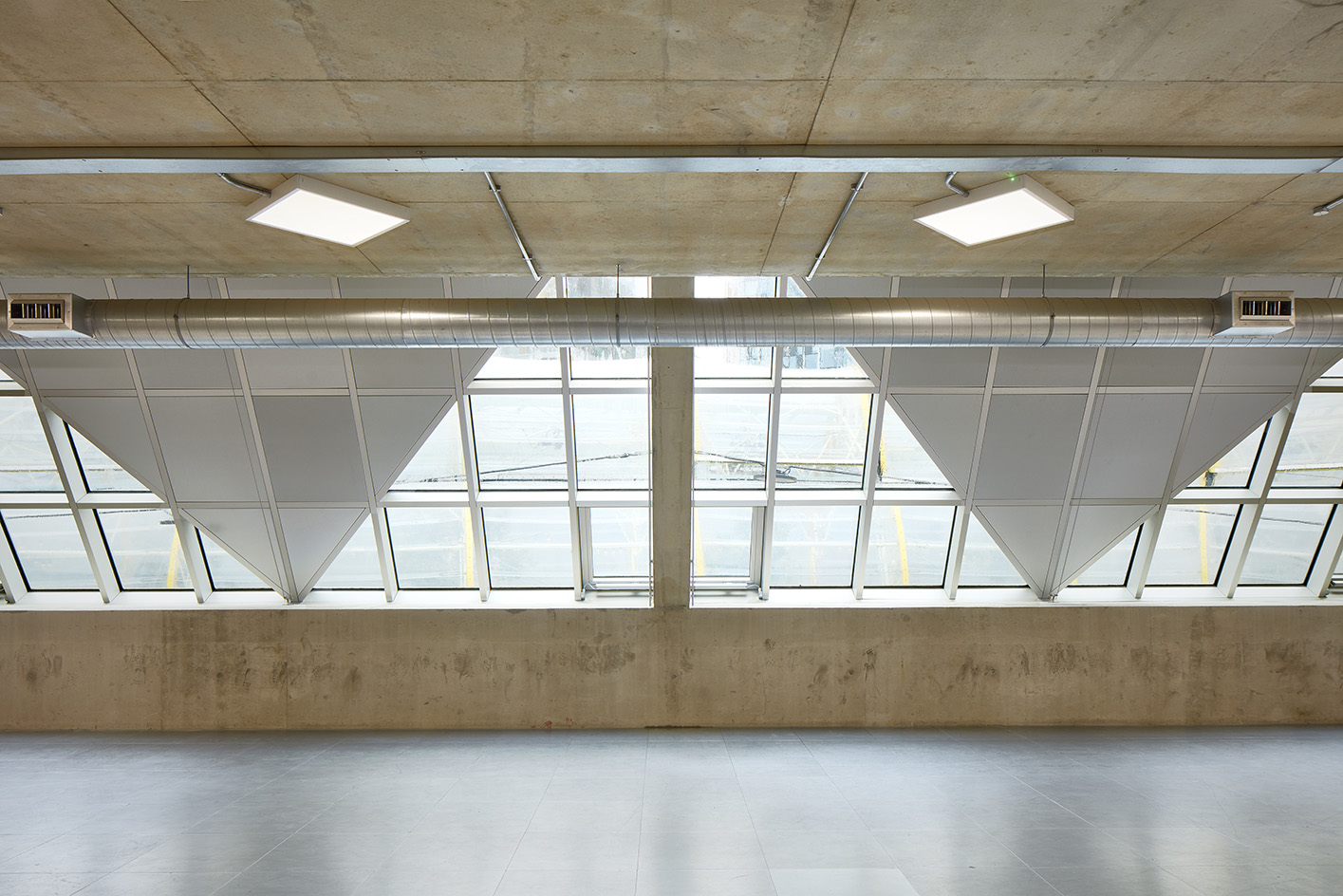
This winter, 6a architects is unveiling not one, but two new buildings in Greenwich Peninsula's Design District. A2 and B2 are now up and running, bringing this quirky, and growing, creative hub in south London one step closer to full completion, while adding some exciting new businesses to the area's curated list of tenants – which so far includes The Photography Foundation and Queercircle.
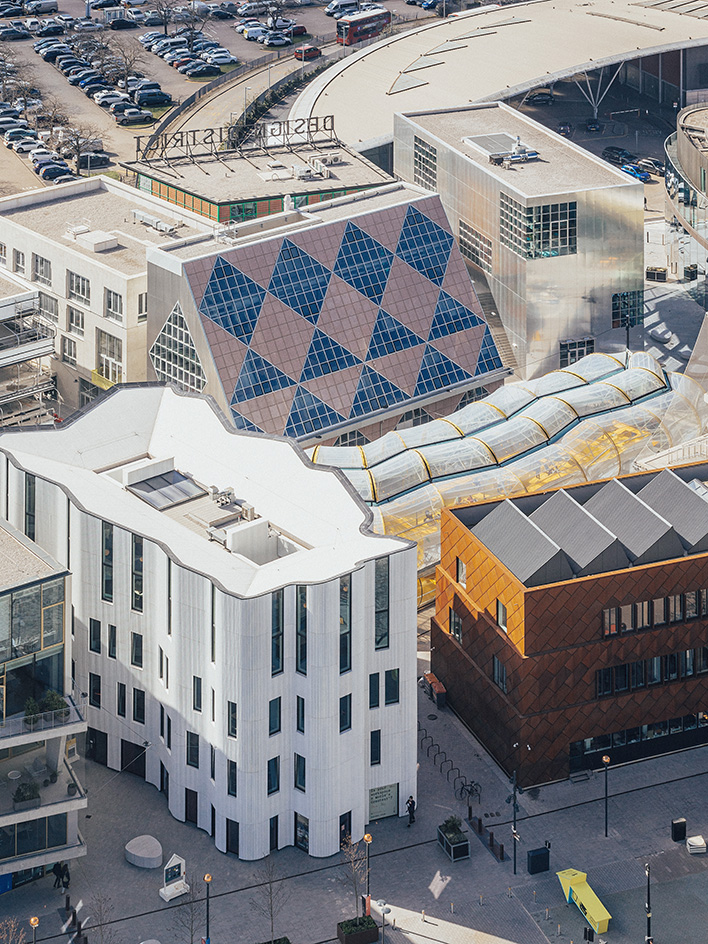
6a architects' two buildings at the Design District
When 6a architects, the studio led by Stephanie Macdonald and Tom Emerson, was invited to participate at the Design District, the architects jumped at the opportunity to experiment with materials and shapes in this new quarter. The architects drew on the tradition of warehouses and working buildings, ‘in which a few basic qualities of space, light, robustness and repetition provide spaces for all sorts of uses over a very long time'.
The team were also inspired by the idea of designing not one, but two new builds here. 'We were very interested in the “double”, to do the same building twice. Partly because of the industrial nature of the brief and partly as the pair have a long architectural history – Piazza del Popolo in Rome and much closer in the Royal Naval Hospital at Greenwich, by Wren. In our case, the buildings are like non-identical twins; almost the same but not quite – one pale pink, the other green. A couple of minor variations in interior layout but otherwise the same,' they explain.
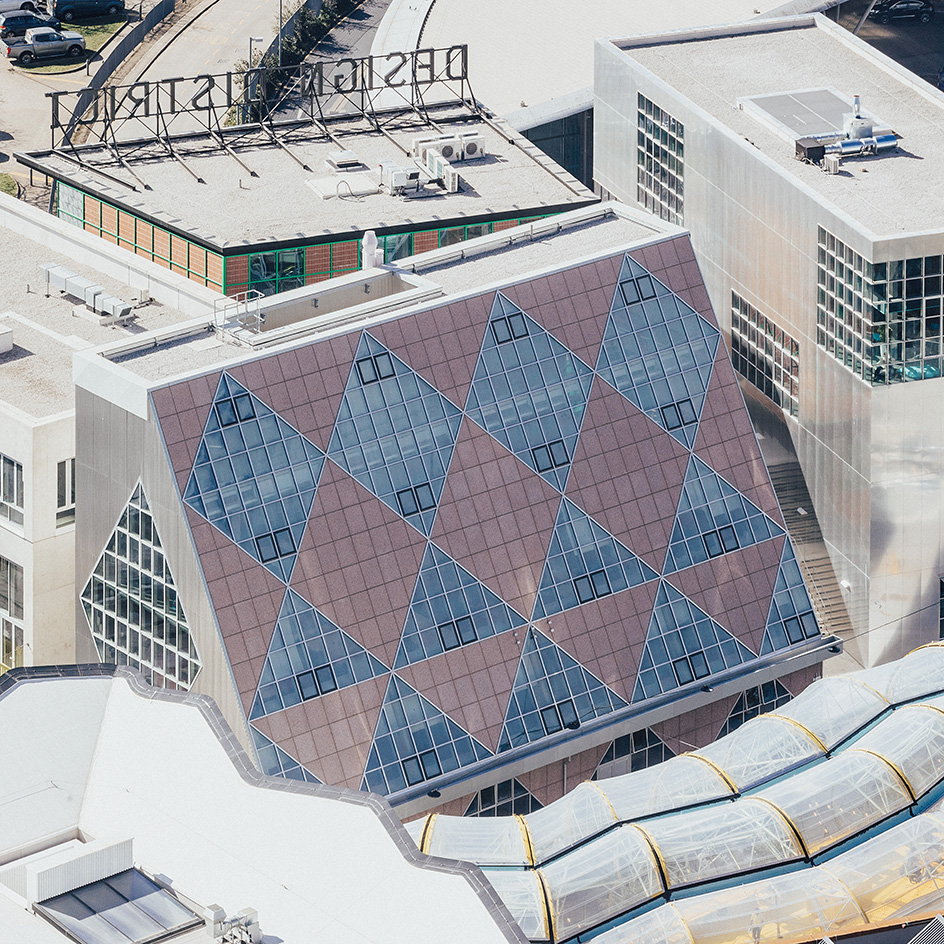
The result is a set of sharp and geometric structures, close – but not next – to each other. Graphic patterns in the openings and cladding make them stand out, carving their own identity in the Design District's well-known, by now, explosion of colour and shape – its collection so far spans from Roz Barr's minimalist, block-coloured Bureau, to the dichroic surfaces of D2 by Mole Architects.
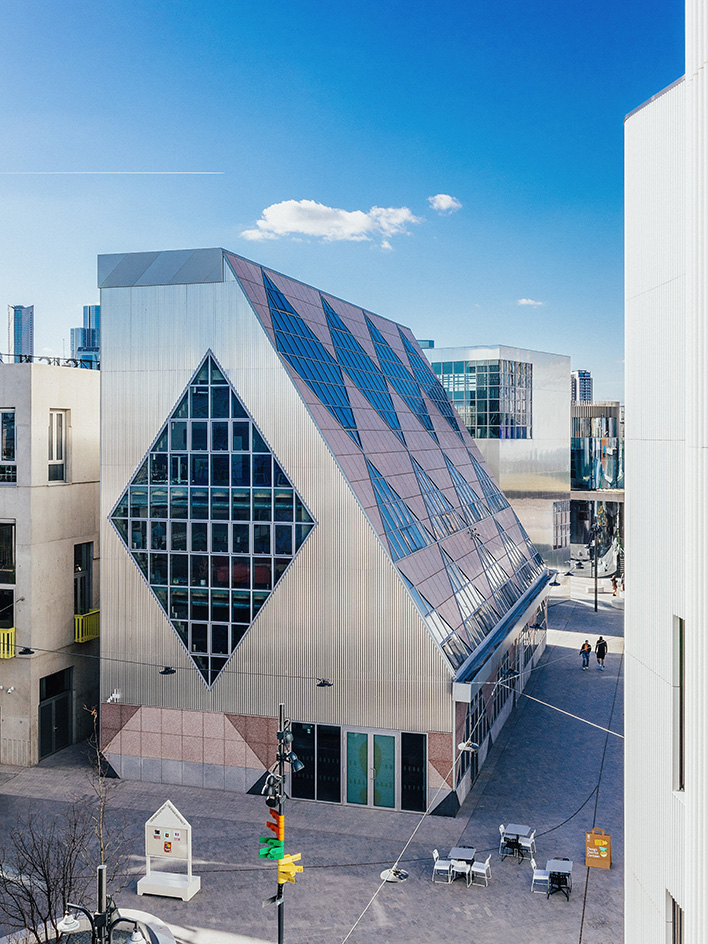
However, these seemingly random volumes are not an architect's mere flight of fancy. 'The shape was a product of the areas required distributed over the allowable height. We started with a straight extrusion of the footprint repeating up to the maximum height. However, this produced more space than required,' 6a explain. 'So, we started cutting the volume obliquely until we reached exactly the right areas. This cut in turn produced floors with distinctive characters and quite radical proportions, especially the top floor, while allowing more sunlight into the streets and public spaces. The cut also introduced this oblique form which led to exploring it further as a figure for the façade and fenestration.'
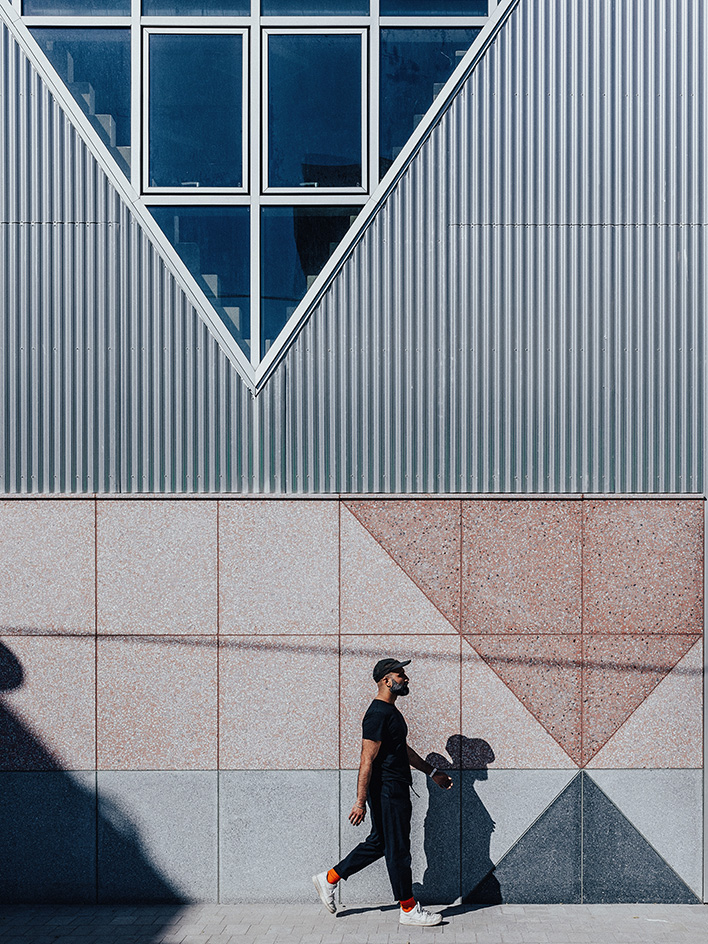
The choice of materials was similarly informed by practical needs and qualities, such as durability. The architects ended up using terrazzo and corrugated aluminium on the outside, and blockwork and pink (fireproof) plasterboard (in some places unfinished and exposed, in others green and moisture resistant) inside. The work of American artist Richard Artschwager, who made sculptures using Formica, served as inspiration.
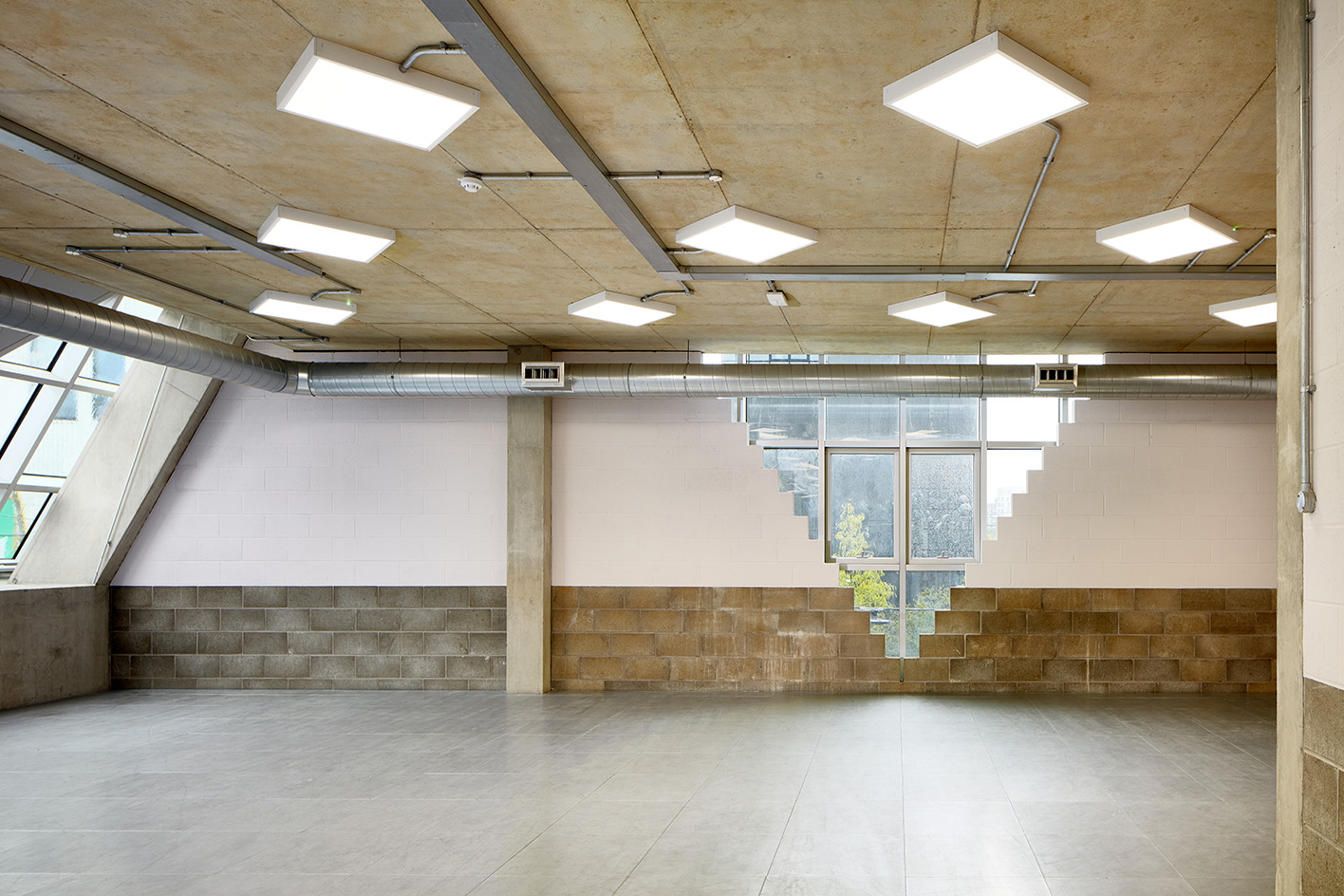
It was a welcome challenge for the architects at 6a: 'It is very rare for a developer to create a centre of creative production like Design District. It is a completely synthetic place, the product of an idea more than evolving over time. In one sense, Design District is quite foreign to London’s general tendency to evolve naturally with uses moving organically around the city over time. On the other hand, it is very like London to be experimentally audacious – to try something new against the current. It has been a great experience to be part of the Design District, working alongside many colleagues we hugely admire and for a client who showed great vision in an era where risk and experiment are all too rare. I hope the users are productive and happy there, now and in the future.'
Receive our daily digest of inspiration, escapism and design stories from around the world direct to your inbox.
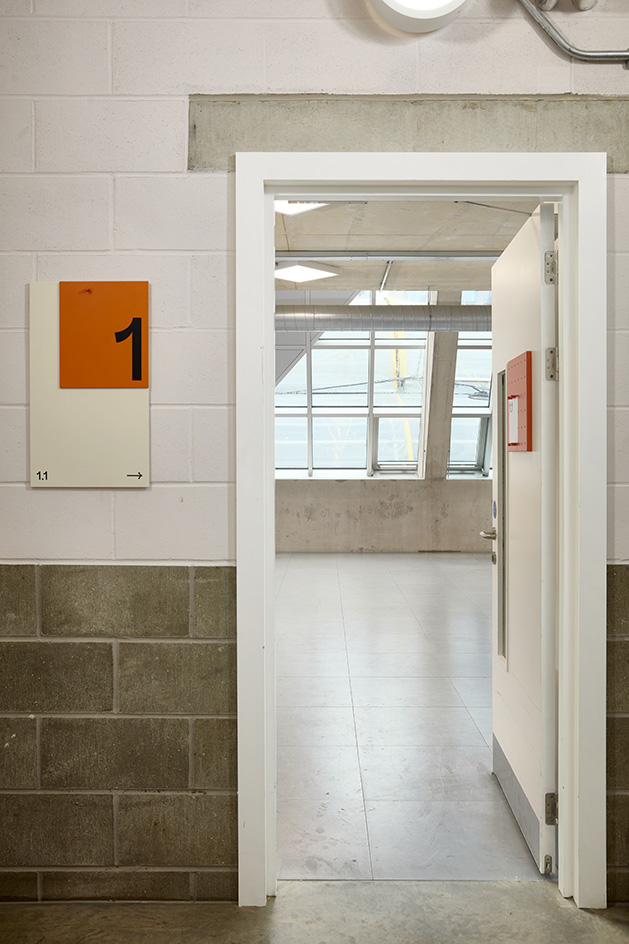
And with only a few studios left available at A2 and B2, there's yet more coming up by the dynamic Design District team. A further two four-storey properties are being prepared, D4 designed by Barozzi Veiga and B1 by SelgasCano. These, set to similarly house workspace, will offer even more opportunities for creative businesses to make a home in this corner of south London.
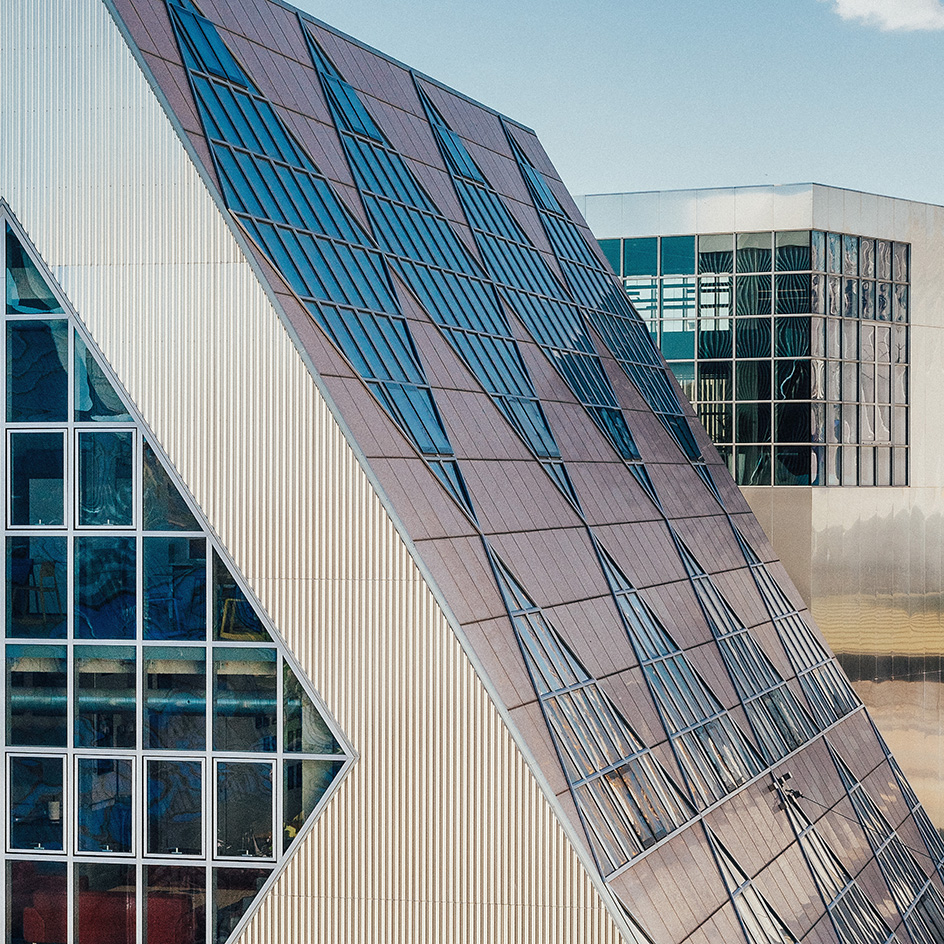
Ellie Stathaki is the Architecture & Environment Director at Wallpaper*. She trained as an architect at the Aristotle University of Thessaloniki in Greece and studied architectural history at the Bartlett in London. Now an established journalist, she has been a member of the Wallpaper* team since 2006, visiting buildings across the globe and interviewing leading architects such as Tadao Ando and Rem Koolhaas. Ellie has also taken part in judging panels, moderated events, curated shows and contributed in books, such as The Contemporary House (Thames & Hudson, 2018), Glenn Sestig Architecture Diary (2020) and House London (2022).
-
 Korean designer Yoonjeong Lee tells ordinary stories in extraordinary ways
Korean designer Yoonjeong Lee tells ordinary stories in extraordinary waysWallpaper* Future Icons: Yoonjeong Lee's work is based on a fascination for utilitarian objects, from pencils to nails, recreated with innovative casting methods
-
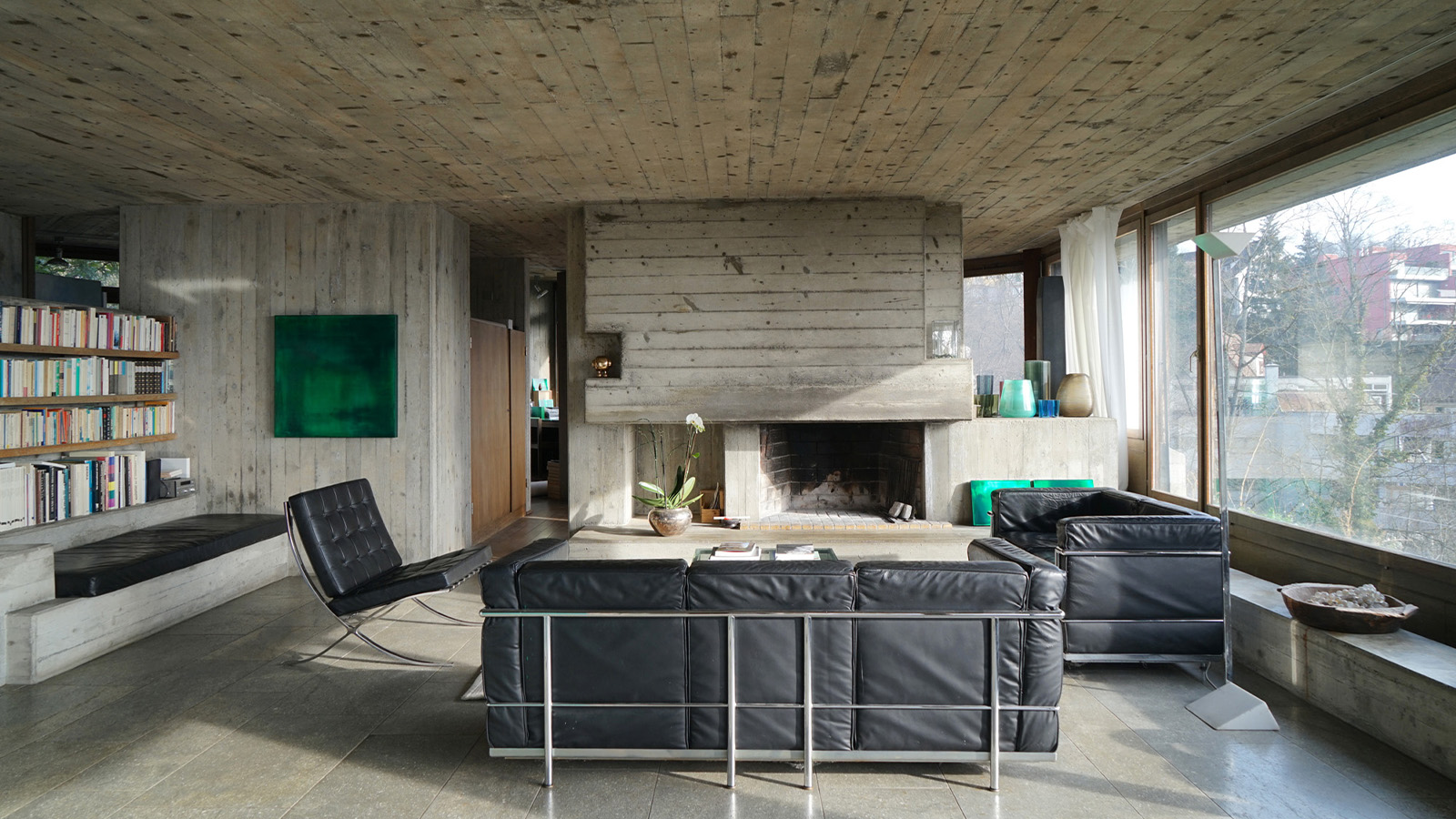 Inside architect Andrés Liesch's modernist home, influenced by Frank Lloyd Wright
Inside architect Andrés Liesch's modernist home, influenced by Frank Lloyd WrightAndrés Liesch's fascination with an American modernist master played a crucial role in the development of the little-known Swiss architect's geometrically sophisticated portfolio
-
 Volvo’s quest for safety has resulted in this new, ultra-legible in-car typeface, Volvo Centum
Volvo’s quest for safety has resulted in this new, ultra-legible in-car typeface, Volvo CentumDalton Maag designs a new sans serif typeface for the Swedish carmaker, Volvo Centum, building on the brand’s strong safety ethos
-
 Arbour House is a north London home that lies low but punches high
Arbour House is a north London home that lies low but punches highArbour House by Andrei Saltykov is a low-lying Crouch End home with a striking roof structure that sets it apart
-
 A former agricultural building is transformed into a minimal rural home by Bindloss Dawes
A former agricultural building is transformed into a minimal rural home by Bindloss DawesZero-carbon design meets adaptive re-use in the Tractor Shed, a stripped-back house in a country village by Somerset architects Bindloss Dawes
-
 RIBA House of the Year 2025 is a ‘rare mixture of sensitivity and boldness’
RIBA House of the Year 2025 is a ‘rare mixture of sensitivity and boldness’Topping the list of seven shortlisted homes, Izat Arundell’s Hebridean self-build – named Caochan na Creige – is announced as the RIBA House of the Year 2025
-
 In addition to brutalist buildings, Alison Smithson designed some of the most creative Christmas cards we've seen
In addition to brutalist buildings, Alison Smithson designed some of the most creative Christmas cards we've seenThe architect’s collection of season’s greetings is on show at the Roca London Gallery, just in time for the holidays
-
 In South Wales, a remote coastal farmhouse flaunts its modern revamp, primed for hosting
In South Wales, a remote coastal farmhouse flaunts its modern revamp, primed for hostingA farmhouse perched on the Gower Peninsula, Delfyd Farm reveals its ground-floor refresh by architecture studio Rural Office, which created a cosy home with breathtaking views
-
 A revived public space in Aberdeen is named Scotland’s building of the year
A revived public space in Aberdeen is named Scotland’s building of the yearAberdeen's Union Terrace Gardens by Stallan-Brand Architecture + Design and LDA Design wins the 2025 Andrew Doolan Best Building in Scotland Award
-
 The Architecture Edit: Wallpaper’s houses of the month
The Architecture Edit: Wallpaper’s houses of the monthFrom wineries-turned-music studios to fire-resistant holiday homes, these are the properties that have most impressed the Wallpaper* editors this month
-
 A refreshed 1950s apartment in East London allows for moments of discovery
A refreshed 1950s apartment in East London allows for moments of discoveryWith this 1950s apartment redesign, London-based architects Studio Naama wanted to create a residence which reflects the fun and individual nature of the clients